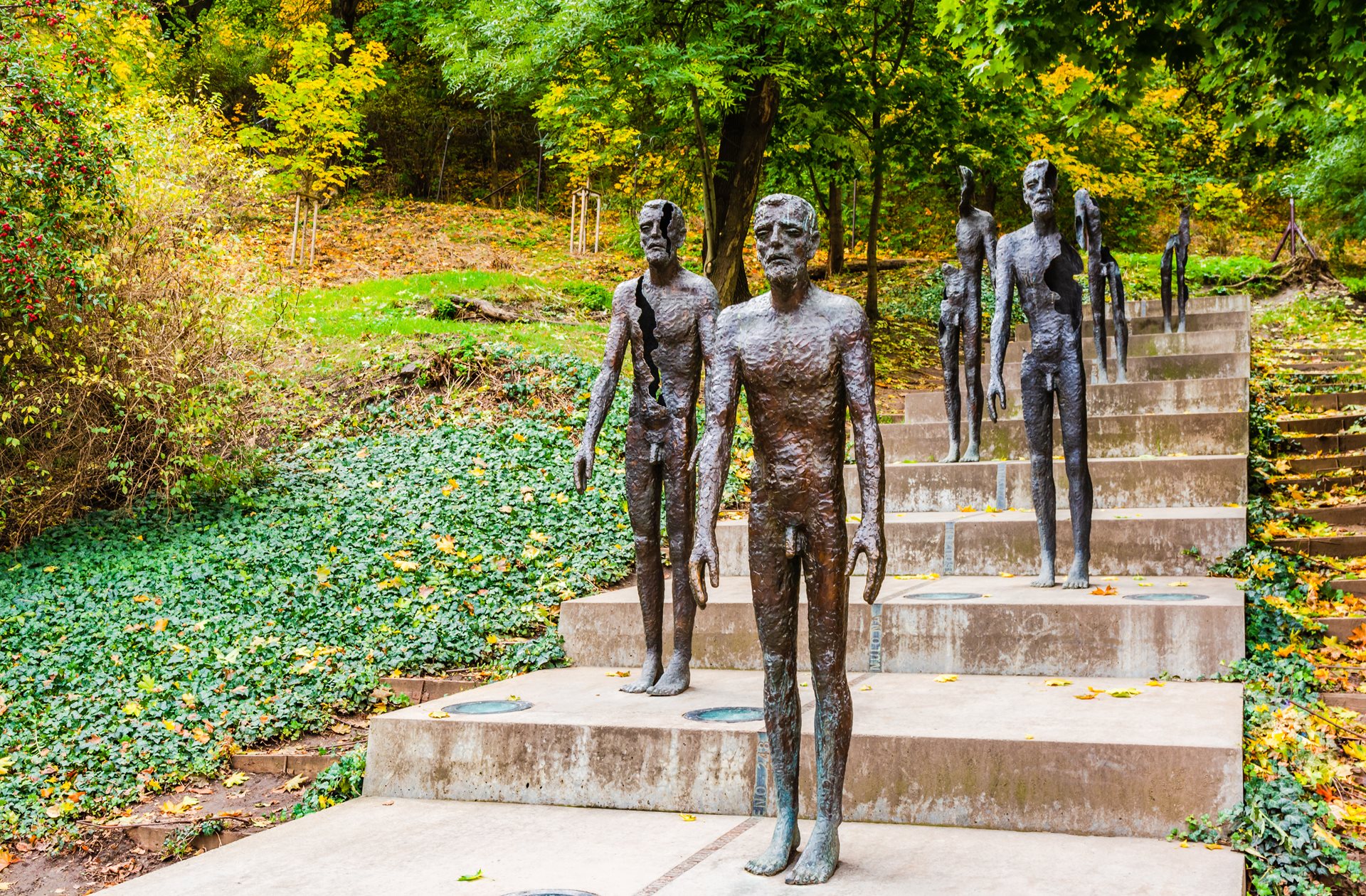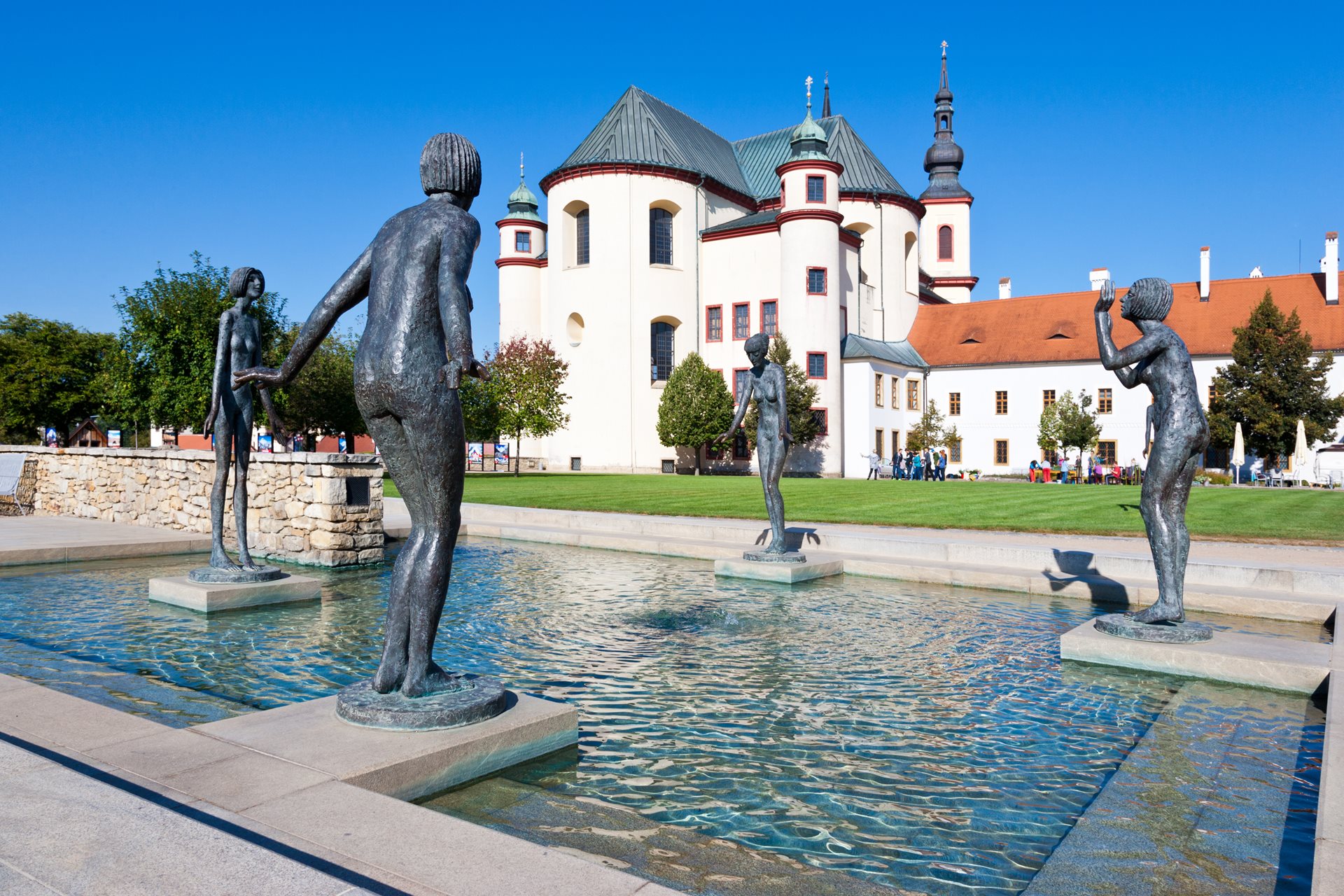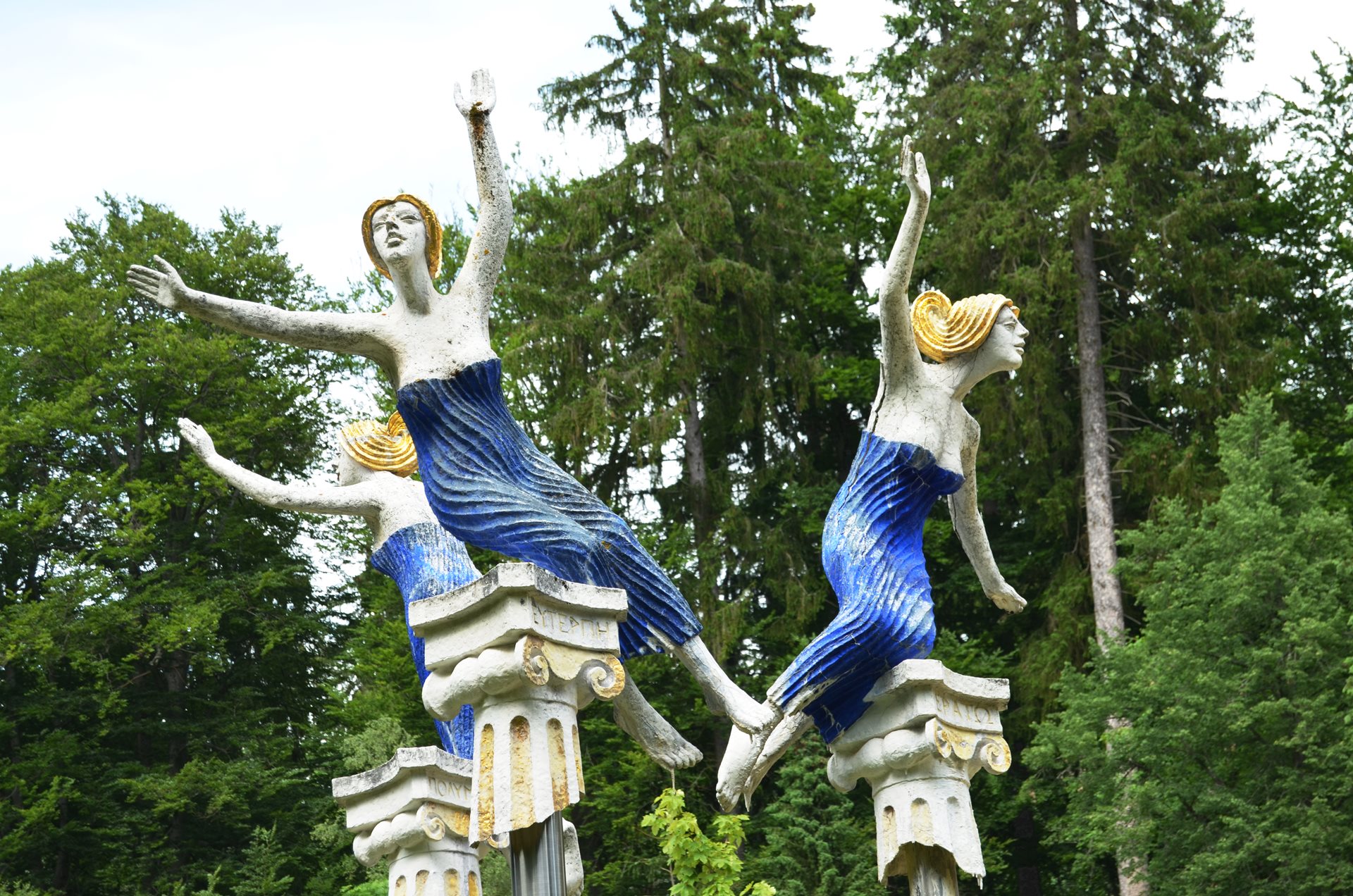Olbram Zoubek, one of the most notable and best-known Czech sculptors of the second half of the 20th century, would have celebrated his 95th birthday in 2021. When you get to know him closely, his sculptures are easy to recognise at first sight – they usually depict long, thin figures with gold-plated details. The sculptures are always inclined as if in motion, or gesticulate noticeably and bear an inspiration from antiquity. Who was Olbram Zoubek and where can you see his works?
Who Olbram Zoubek was
Olbram Zoubek was born on 21 April 1926 in Prague and he graduated from the Academy of Arts, Architecture and Design in Prague after the Second World War. He made his living as a restorer of Renaissance sgraffiti as well as a sculptor-designer. Dozens of statues and memorials bear his name. He also created the death mask of Jan Palach, a student who committed self-immolation in Prague in 1969 in protest against of the occupation of Czechoslovakia by Soviet troops. Olbram Zoubek lived alternately in Prague and in the east Bohemian town of Litomyšl, which will be connected with his name forever. He died in 2017 at the age of 91.
Zoubek’s sculptures
You can find one of the best-known sculptural groups by Olbram Zoubek in his beloved town of Litomyšl, which was Zoubek’s second home. That’s why the artist couldn’t miss out on the revitalisation of Castle Hill. The Monastery Gardens, where the sculptural group is located, lie near the former Piarist monastery between two Litomyšl churches not far from the castle. By the way, the castle is a Renaissance gem included in the UNESCO Heritage List. The gardens are adorned by a gazebo overlooking the town, flower beds and, in the middle, a pool with the sculptural group by Olbram Zoubek, who donated it to the town. You will also find a collection of Zoubek’s sculptures in the castle cellars, which offer unique rooms with a unique atmosphere.A beautiful sculptural group typical of Zoubek is located in Krnov, Silesia. It is called Joy of Life and includes rare sculptures from the period when the sculptor was inconvenient to the communist regime for his views and, as a result, couldn’t produce creative works.

Zoubek’s memorials
Memorial to the victims of Communism in Prague: this impressive monument is dedicated to all the victims of the communist regime in Czechoslovakia and to all political prisoners from the 1950s. The monument is situated in Lesser Town right below Petřín Hill. It is composed of a narrowing staircase and a sculptural group of seven emaciated figures. The first of them is whole and others are gradually “disintegrating” naked male figures that are to symbolise the gradual physical and mental degradation and suffering of prisoners in communist concentration camps.Milada Horáková Memorial in Prague: another memorial by Zoubek in the Prague district of Smíchov, and it again commemorates an innocent victim of the Czechoslovak communist regime of the second half of the 20th century. Milada Horáková was a lawyer and MP, who was inconvenient to the communist regime and was executed following a show trial in 1950. The slightly larger than life-size memorial to Milada Horáková consists of a bronze statue with a bent head, whose back faces the street. A golden rose and noose lie close to it on a plaque. The memorial is in the park in front of the Evangelical church where Milada Horáková used to regularly attend services throughout her life.
Memorial to the Kroměříž victims of the Holocaust: if you visit Kroměříž in central Moravia, you not only have an opportunity to see gardens that are inscribed on the UNESCO list, but also the memorial by Olbram Zoubek. The memorial commemorates the Kroměříž victims of the Holocaust as well as one of the three Kroměříž synagogues destroyed by the Nazis during the Second World War – the memorial is situated in its place in the middle of the former Jewish quarter.
Other artistic creations
Olbram Zoubek was a sculptor whose art was valued by many people. That’s why you can encounter his sculptures, for example, in hotel lobbies, in chateau courtyards, and this artist even took care of the decoration of some graves, e.g., the grave of the already mentioned Jan Palach. The grave is located in the Olšany Cemeteries in Prague. The style of his work is unmistakeable. Olbram Zoubek created various small reliefs as well. However, they are mostly part of private collections both in the Czech Republic and abroad.










